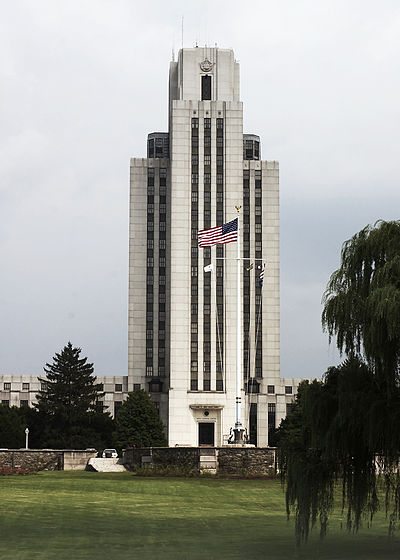
PHILLY PANTO
Do we still celebrate Columbus Day? This summer, statues of the intrepid explorer were defaced, beheaded, and toppled. In South Philadelphia, the City shrouded a Columbus statue and recently announced its removal. It is unclear what will happen to the Columbus Memorial near the Delaware River. The 106-foot ersatz obelisk was designed by Robert Venturi and Denise Scott Brown in 1992. According to the Philadelphia Inquirer, “The Delaware River Waterfront Corp., which maintains the monument but was not responsible for its construction, said in a statement Tuesday that the statue ‘does not align with DRWC’s mission to create and maintain a safe and welcome space for all.’” In order to “protect public safety” and “reduce continued pain” the now offensive text at the base of the obelisk, which identifies Columbus as “Charismatic Leader, Navigator, Mathematician, Cartographer” has been covered over with plywood. Safe spaces. The Orwellian pantomime continues.

THE TALENTED MR. CRET
Perhaps the most televised twentieth-century work of American architecture is the Federal Reserve headquarters (Eccles Building) in Washington, D.C., designed by Paul Philippe Cret (1876-1945) in 1938. Cret’s stripped classical facade inevitably accompanies any report on the Fed on the nightly news. Now Cret has a twofer: Walter Reed National Military Medical Center in Bethesda, where President Trump was taken for treatment of Covid-19. Walter Reed was designed by Cret in 1939-42. It is said that President Roosevelt suggested the twenty-story tower to Cret after visiting Bertram Grosvenor Goodhue’s Nebraska State Capitol. Walter Reed is an example of Cret’s late style, a blend of stripped Classicism and Art Deco. Cret never designed a skyscraper, but this gives a good idea of the direction he might have taken.

INFLUENCE
The cancel culture never sleeps. The discovery that Edward Hopper once copied paintings “challenges the notion that Hopper was an absolute original, uninfluenced by others” according to the breathless headline in the New York Times. A rather silly conclusion since Hopper was sixteen at the time, and was obviously using the paintings of others as an exercise, to hone his—yet unformed—skills. And since neither the technique nor the themes of these pedestrian paintings prefigure his later work, it is a real stretch to speak of “influence.” When I was sixteen I remember clumsily copying Picasso’s “Mirror Woman”; the masonite panel hung in my parents’ basement rec room for years. I was rather proud of it.

THE USUAL SUSPECTS
The City of Philadelphia has announced a $2.2 billion development on the Penn’s Landing site beside the Delaware River. The twelve towers include apartments, offices, and a hotel, the architects are Pelli Clarke Pelli and Bjarke Ingels Group. PCP has already designed high-rise buildings in the city; BIG is a newcomer. Both continue the recent pattern of importing outsiders such as Vinoly, Foster, Gehry, Snøhetta, Williams & Tsien, Pei Cobb Freed, Ennead—the usual suspects. Philadelphia, like most big cities, once had its own stable of eminent practitioners—Strickland, Walter, Furness, Cope & Stewardson, Eyre, Trumbauer, Cret, Howe—and their buildings gave the city its own particular character. That is gone. Now what we get are generic solutions that could be anywhere. The proposed Penn’s Landing buildings will be all-glass, of course.

CANCEL CULTURE
Although some have claimed that the “cancel culture” doesn’t really exist, a nationwide Zogby Analytics poll of likely voters recently found that a narrow plurality (37 percent) supported cancel culture, with 32 percent opposed and 30 percent “not sure.” Some of the poll details are interesting: support was stronger among men than among women, and stronger in the East than in the Midwest; the strongest support was among younger voters, 18-29 and 30-49, whereas the strongest opposition was among voters over 65; and also—surprisingly, at least to me—opposition was strong among the youngest group, 18-24. Self-styled conservative voters were equally split between support and opposition to the cancel culture, whereas 62 percent of progressives voiced support, compared to only 15 percent opposed. It appears that cancel culture (an oxymoron if ever there was one) is fated to be a part of American life for some time to come.

WOKE SPEED BUMP
Museum directors, college deans, and newspaper editors take note.
A few weeks ago a petition spearheaded by a San Francisco Bay Area high school senior was submitted to the Trader Joe’s supermarket company that included the following claim. “The Trader Joe’s branding is racist because it exoticizes [sic] other cultures — it presents ‘Joe’, as the default ‘normal’ and the other characters falling outside of it … The common thread between all of these transgressions is the perpetuation of exoticism, the goal of which is not to appreciate other cultures, but to further other and distance them from the perceived ‘normal.’” These days such statements are followed by steely-eyed demands, and these days most companies and institutions comply.
Trader Joe’s response? “A few weeks ago, an online petition was launched calling on us to ‘remove racist packaging from [our] products.’ Following were inaccurate reports that the petition prompted us to take action. We want to be clear: we disagree that any of these labels are racist. We do not make decisions based on petitions.”
As a dedicated TJ shopper I say, “Good for them.”

